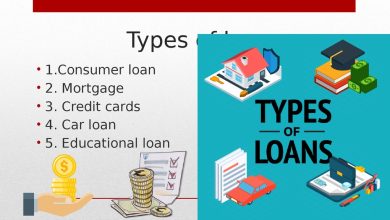The Complete Guide to Installment Loans: Installment Loan Costs & Benefits
Everything You Need To Know Before Taking Out An Installment Loan
When you need a convenient way to fund various things in your life, an installment loan might be the answer. These types of loans allow you to borrow money for a fixed period of time at a specified rate of interest. This can help you get the things you need now and plan for the future as well.
In this blog, we will talk about everything you need to know about installment loans: their advantages, risks, types, and more. After reading this post, you will be equipped with the knowledge needed to make an informed decision when it comes to taking out one.
When it comes to borrowing money, there are several different options that you have at your disposal. From traditional loans such as a mortgage or auto loan to more unconventional options like a personal loan or an installment loan. These loans all have their pros and cons so it’s important to know what they are before taking the leap. Even though they come with their own set of risks and disadvantages, the good news is that both mortgage lending standards and consumer demand for installment loans have eased over the past few years. Therefore, if you’re looking for ways to put your home up for sale without having it sit idle, or if you want to buy something new on time with a small down payment instead of waiting until after you’ve retired or saved enough for a larger down payment, then an installment loan might be right for you.
What is an installment loan?
An installment loan is a type of loan where you make regular payments over a specific period of time. The loan may be for a set amount or may have a variable interest rate. For example, the loan may be for $10,000 with a $3,000 down payment and payments of $300 per month for 36 months. There are a number of different ways that installment loans can work. With some loan types, the loan repayments cover the entire cost of the item. For example, with a car loan, you pay the loan off over the course of the loan period, which means you end up owning the car outright. With a home loan, you may make regular mortgage payments that cover the loan’s remaining principal and interest.
How do you get an installment loan?
You can approach a lender and ask them to offer you an installment loan. Typically, this is done over the phone but you can also do it online. There are also online loan comparison websites that connect you with various lending institutions. When you call a lender, you’ll likely be put on hold for at least 30 seconds before you can even talk to a rep. In order to get approved for an installment loan, you’ll likely need to provide the following: – Your name – Your social security number – The names and addresses of relevant people who can cosign your loan – A detailed plan for paying the loan off – A budget for your monthly spending – A detailed explanation of why you need the money
The three main types of installment loans
– Mortgage-backed securities:
A mortgage-backed security (or MBS for short) is a type of asset-backed security. This means that the underlying assets are mortgages, which are backed by the US government. This is the most common type of home loan, with more than 90% of all mortgage borrowers taking out an MBS.
– Refinance:
A refinance is like a mortgage where you take out a new loan on your home and pay off the existing loan. You don’t have to make new payments. Instead, you just have to pay off one loan using the new loan. The advantage to this is that it can help you get out of debt faster. The disadvantage is that you may no longer be able to take advantage of interest rate reductions that come with paying off a mortgage loan.
– Home equity loan:
With a home equity loan, you borrow money from the equity you already have in your house. This could be the equity from a previous mortgage, or it could be the extra cash you have in your house such as a home equity line of credit (HELOC) or a home equity line of credit (HELOC).
Advantages and Disadvantages of getting an installment loan
Advantages of Installment Loans
- Home loan interest rates are lower than those for a traditional loan.
- You can get a loan without putting a down payment. – You can borrow as much as you need as long as you have enough equity.
- You can borrow against your home equity without having to pay additional taxes.
- Interest only loans mean no payments until you sell your house. – You can get a home equity loan without a co-signer.
Disadvantages of Installment Loans
- Your loan payment will be going toward the principal of your loan. This means the interest on your loan will be going back out to the lender.
– If you don’t pay the loan off by the end of the loan period, you’ll be paying interest on the full loan amount until you do.
– Home equity loans put a limit on how much you can use. Usually, it’s only as much as the equity you have in the house itself.
How to find a reputable lending institution for an installment loan
You should first make a list of the things you want and need. For example, if you need to put a down payment on a house or a car, you’ll want to try to find a loan that has a down payment option. If you need to buy a larger item such as a home appliance or electronics, you’ll want to try to find a loan that allows for a higher purchase amount. Once you have a list of the things you need and want, you can start reviewing loan offerings provided by online loan comparison websites. This can help you identify which lending institutions have the loan rates and terms that you need.
Finding the right repayment term for your situation
As mentioned above, there are a number of ways that an installment loan can work. In some cases, the loan is completely paid off before the loan expires. For example, a car loan with no down payment might have a 36-month repayment period. When the loan is fully paid off, you take the car off the loan and the loan is completely closed. A mortgage loan, on the other hand, will have a repayment period between 20 and 30 years. This can be a difficult decision because you could end up paying off the loan before you die but also end up paying off the loan with interest. In this case, it’s best to get a home equity loan. In this instance, you can refinance the loan with a new mortgage at a lower rate and pay off the old loan.
Sample repayments for various terms
Mortgage: $300 monthly for 36 months
Car loan: $300 monthly for 36 months
Home equity loan: $50,000 at 6% and paid off after 10 years
Home purchase loan: $20,000 at 4% and paid off after 20 years
There are many different repayment terms and loan amounts available. You’ll want to consider your financial situation and what you need the money for when choosing a repayment term.
Final Words
Institutionally structured installment lending is a complex environment that can be difficult to navigate, and even more difficult to exit. Many lenders will require you to open a new account and to commit to making payments on a loan for over 20 years. The key is to understand the different types of loans, determine which types of loans are best for you and your financial situation, and then communicate your needs clearly and concisely with your lenders.









